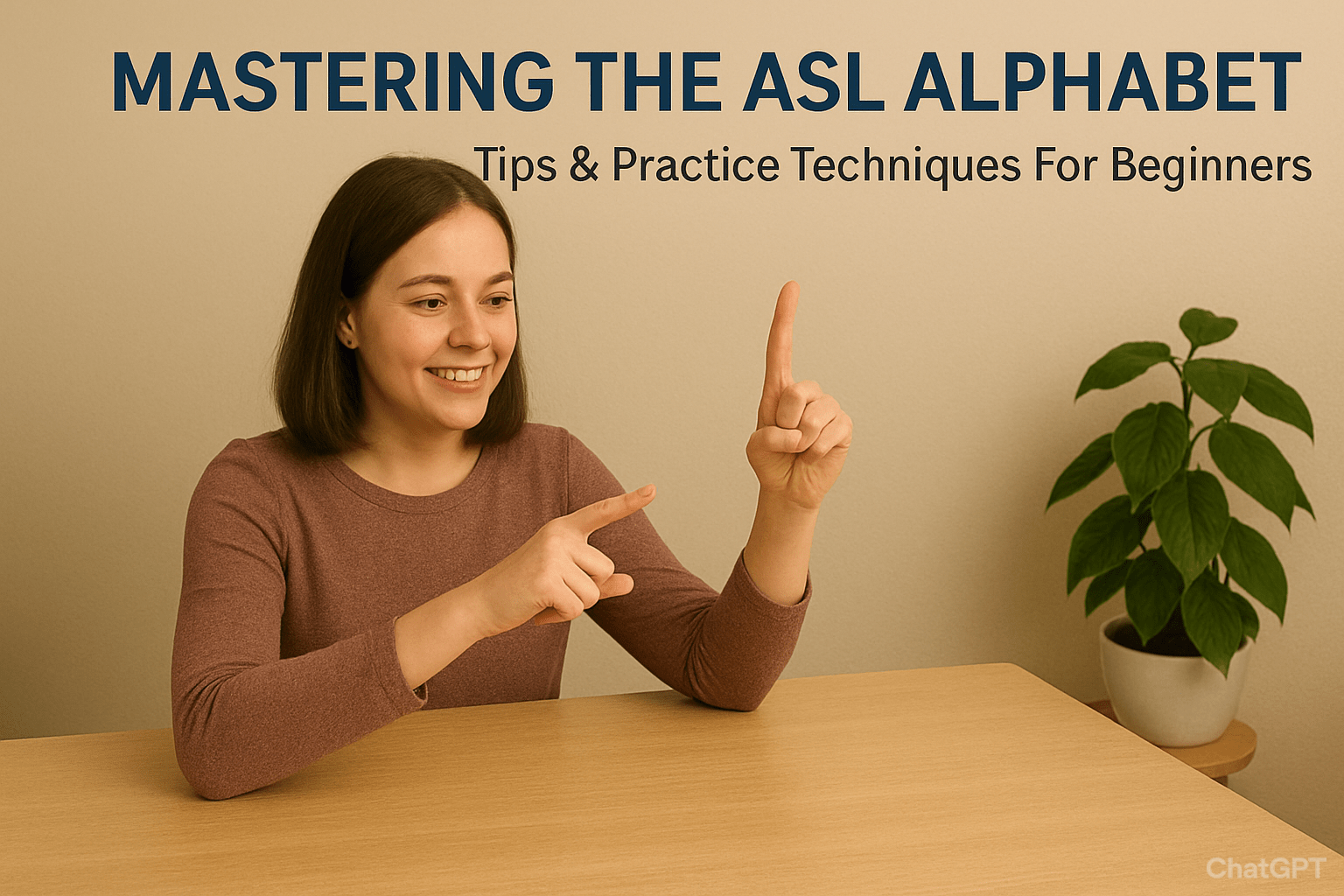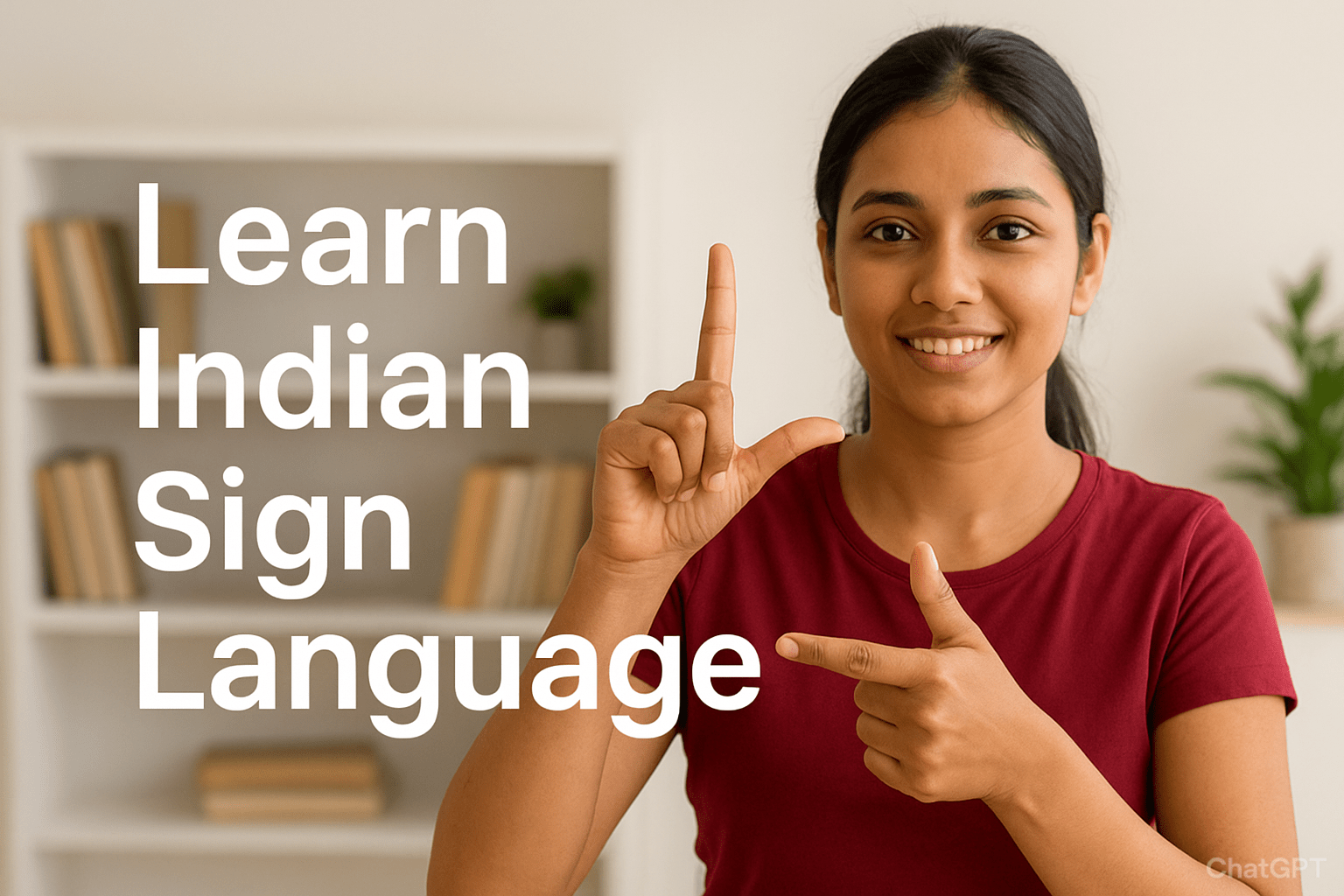Think back to when you first learned your ABCs. Maybe you sang the alphabet song, maybe you traced letters in a book. It probably felt a little tricky at first — but now you don’t even think twice about it.
Learning the ASL alphabet is the same. At first, those 26 handshapes feel like a puzzle. But with the right tricks (and a bit of practice), they’ll become second nature — and you’ll suddenly have a new way to connect with millions of people who use American Sign Language every day.
What is the ASL Alphabet, Really?
The ASL alphabet — also called fingerspelling — is simply a set of 26 hand signs that match the English alphabet. You’ll use it to spell out names, places, or words that don’t yet have an official sign.
Think of it as your “backup plan.” Even if you don’t know the sign for “pineapple” or “Amelia,” you can still spell it out. That’s why it’s usually the first thing people learn when starting ASL.
👉 Curious how it compares to Indian Sign Language? Peek at our ISL Alphabet Guide.
Why Bother With the ASL Alphabet?
Because it’s your safety net. Even if you only know the alphabet, you can still:
- Introduce yourself (“Hi, my name is …”)
- Ask someone’s name
- Spell tricky words that don’t have signs
- Follow along in conversations you’re still learning
It’s not just “the ABCs” — it’s your ticket into real communication.
Here’s a quick glimpse into the ASL alphabet:
Tips That Make Learning Easier
1. Don’t Cram All 26 Letters at Once
Break the alphabet into small sets (like A–H, I–P, and Q–Z). Master one set, then move on. It feels less like memorizing and more like building little victories.
2. Look for “Shape Twins”
Some letters look just like their English form:
- “L” looks like an L with your thumb and finger.
- “C” literally makes the shape of a C.
Noticing these makes the alphabet way less intimidating.
3. Practice With Your World
Start spelling things that matter to you — your name, your pet’s name, your favorite snack. The personal connection makes the signs stick.
4. Slow and Steady Wins
It’s tempting to go fast, but clarity matters more. Think of it like speaking — you want people to understand, not just hear.
5. Watch Yourself
A mirror or phone camera can be your best teacher. When you watch your handshapes, you’ll catch little mistakes you didn’t notice while practicing.
Fun Ways to Practice the ASL Alphabet
- Flashcards: Write letters on one side, draw (or print) the signs on the other.
- Sing and Sign: Try signing while humming the ABC song. Childish? Maybe. Effective? Definitely.
- Daily Word Game: Each day, pick 3 random words and spell them out. Coffee, train, laptop — whatever’s around you.
- Buddy System: Practice with a friend. One spells, the other guesses. Laughter guaranteed.
- Alphabet Race: Time yourself spelling A–Z and see if you can shave off seconds while staying accurate.
Common Beginner Slip-Ups (And Why They’re Normal)
- Mixing up M and N (it happens to everyone).
- Forgetting that “J” and “Z” require a little movement.
- Turning your palm the wrong way (audience should see your palm for most letters).
- Worrying too much about mistakes instead of just signing.
Truth bomb: even advanced signers mess up fingerspelling sometimes. What matters is effort and clarity, not perfection.
How Long Before It “Clicks”?
If you practice 10 minutes a day, you’ll likely memorize the alphabet within a week. To feel fluent — where you can read and spell quickly—it usually takes a few weeks.
The key? Don’t just drill the alphabet — use it. Spell names in your phone contacts. Sign along with street signs. Sneak it into your daily routine.
What Comes After the Alphabet?
Once you’re confident, don’t stop there. Move into:
- Basic ASL greetings (“hello,” “thank you,” “how are you?”).
- Numbers (you’ll use them constantly).
- Everyday signs like “eat,” “water,” or “help.”
👉 Ready for the next step? Check out our Everyday Signs You Should Know.
To Summarize
The ASL alphabet is more than just letters — it’s the bridge between not knowing and connecting. Once you learn it, you’ll be able to introduce yourself, understand names, and confidently step into conversations in ASL.
And honestly? It’s fun. There’s something satisfying about fingerspelling your name for the first time and having someone understand you instantly.
So here’s your challenge: today, spell your name. Tomorrow, spell your favorite food. Keep going. Before long, those 26 handshapes won’t just be letters — they’ll be your doorway into an entirely new language.
👉 Want to see the alphabet in action? Visit our ASL & ISL Dictionary and start practicing today.


